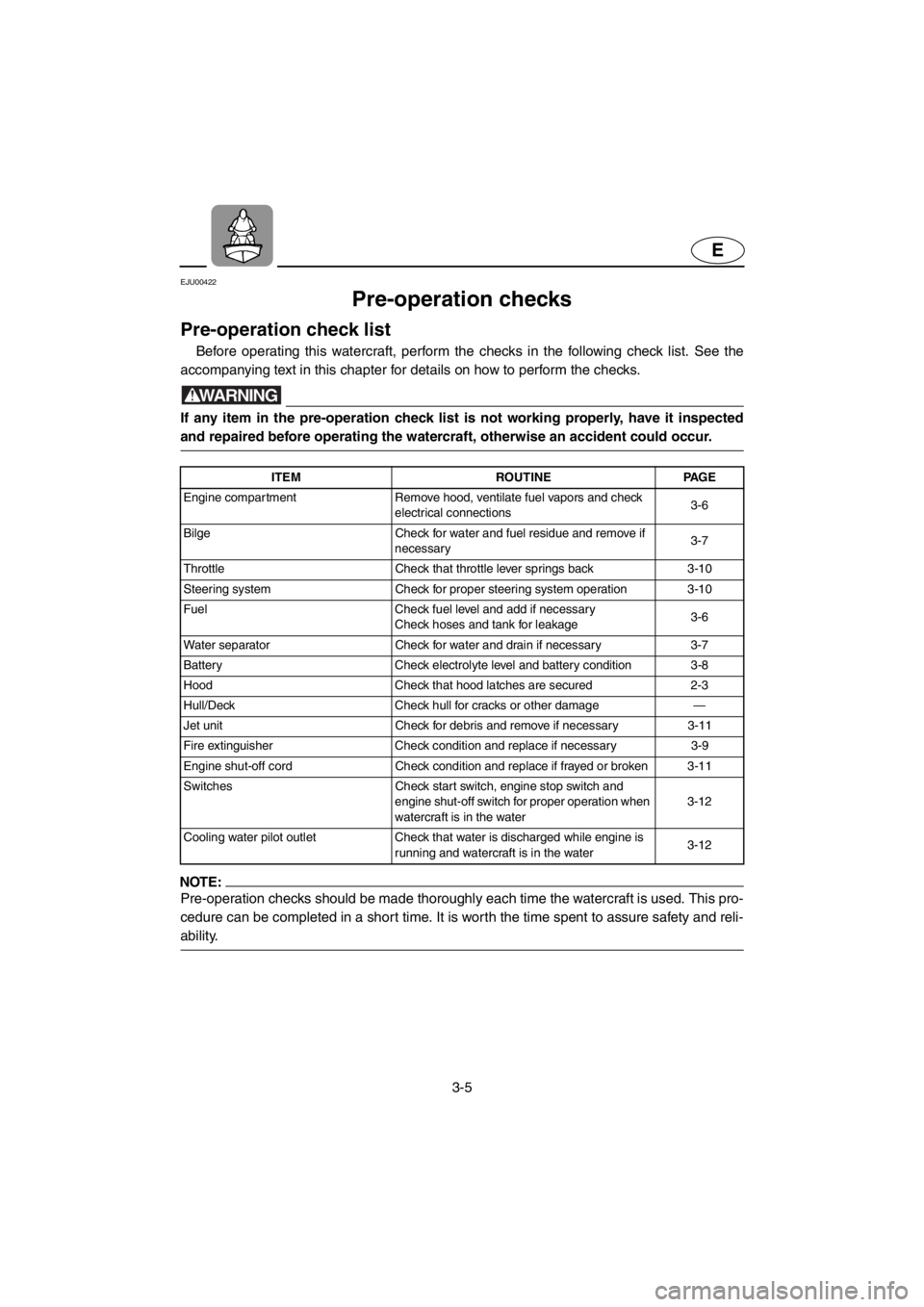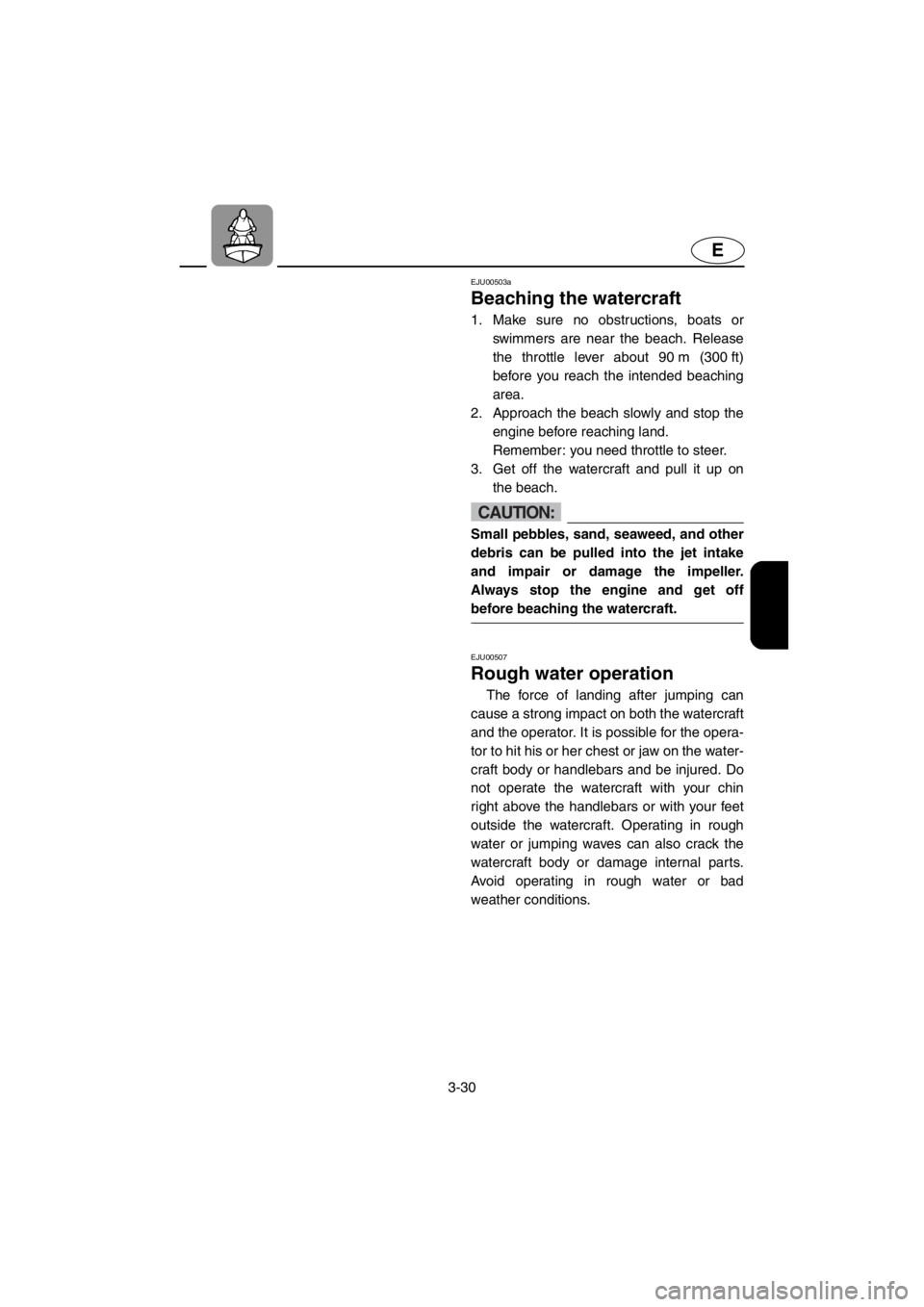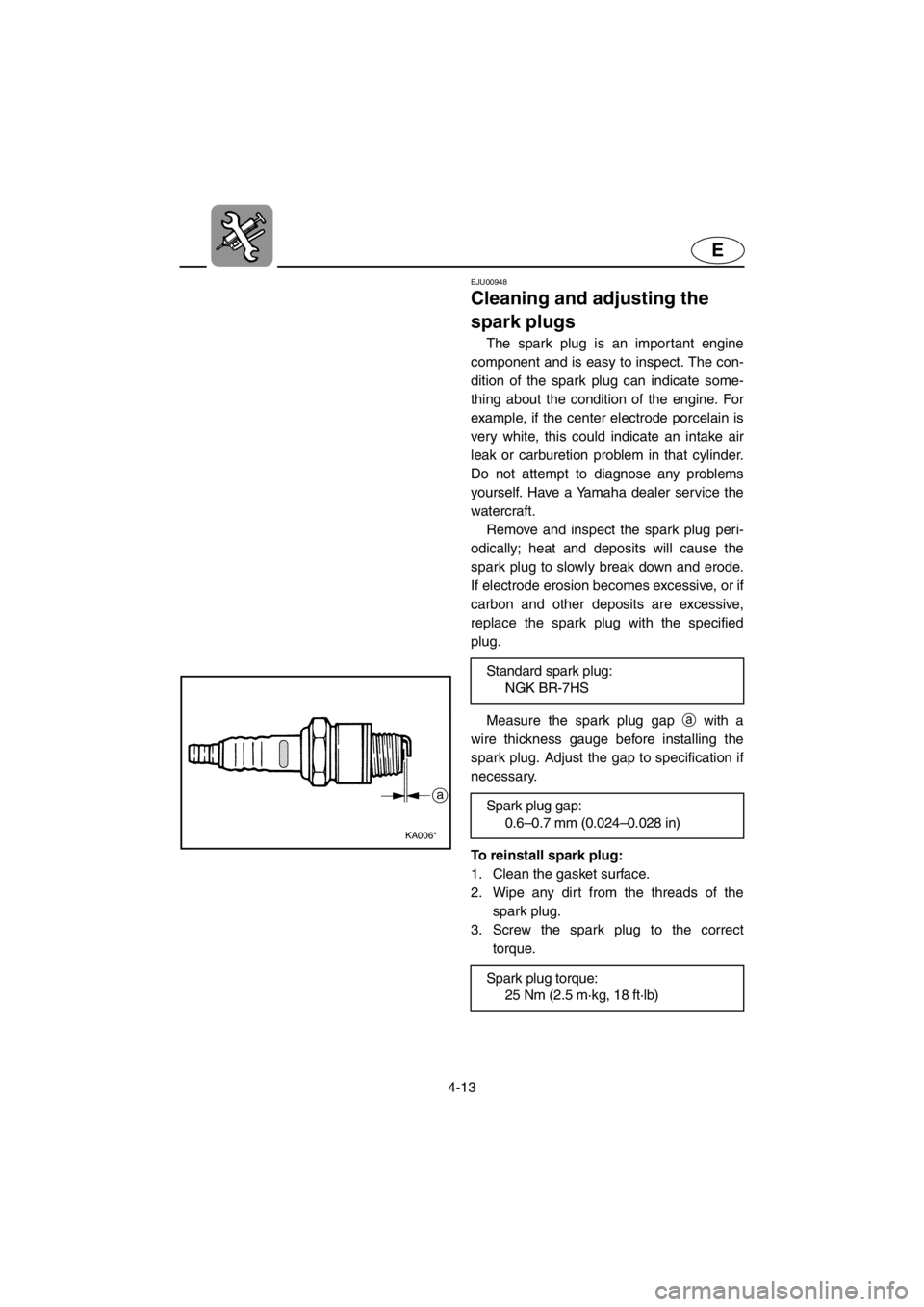Page 40 of 107

3-5
E
EJU00422
Pre-operation checks
Pre-operation check list
Before operating this watercraft, perform the checks in the following check list. See the
accompanying text in this chapter for details on how to perform the checks.
WARNING@If any item in the pre-operation check list is not working properly, have it inspected
and repaired before operating the watercraft, otherwise an accident could occur.
@
NOTE:@Pre-operation checks should be made thoroughly each time the watercraft is used. This pro-
cedure can be completed in a short time. It is worth the time spent to assure safety and reli-
ability.
@
ITEM ROUTINE PAGE
Engine compar tment Remove hood, ventilate fuel vapors and check
electrical connections3-6
Bilge Check for water and fuel residue and remove if
necessary3-7
Throttle Check that throttle lever springs back 3-10
Steering system Check for proper steering system operation 3-10
Fuel Check fuel level and add if necessary
Check hoses and tank for leakage3-6
Water separator Check for water and drain if necessary 3-7
Battery Check electrolyte level and battery condition 3-8
Hood Check that hood latches are secured 2-3
Hull/Deck Check hull for cracks or other damage —
Jet unit Check for debris and remove if necessary 3-11
Fire extinguisher Check condition and replace if necessary 3-9
Engine shut-off cord Check condition and replace if frayed or broken 3-11
Switches Check start switch, engine stop switch and
engine shut-off switch for proper operation when
watercraft is in the water 3-12
Cooling water pilot outlet Check that water is discharged while engine is
running and watercraft is in the water3-12
E_GM6-3.fm Page 5 Tuesday, July 11, 2000 10:52 AM
Page 65 of 107

3-30
E
EJU00503a
Beaching the watercraft
1. Make sure no obstructions, boats or
swimmers are near the beach. Release
the throttle lever about 90 m (300 ft)
before you reach the intended beaching
area.
2. Approach the beach slowly and stop the
engine before reaching land.
Remember: you need throttle to steer.
3. Get off the watercraft and pull it up on
the beach.
CAUTION:@Small pebbles, sand, seaweed, and other
debris can be pulled into the jet intake
and impair or damage the impeller.
Always stop the engine and get off
before beaching the watercraft.
@
EJU00507
Rough water operation
The force of landing after jumping can
cause a strong impact on both the watercraft
and the operator. It is possible for the opera-
tor to hit his or her chest or jaw on the water-
craft body or handlebars and be injured. Do
not operate the watercraft with your chin
right above the handlebars or with your feet
outside the watercraft. Operating in rough
water or jumping waves can also crack the
watercraft body or damage internal parts.
Avoid operating in rough water or bad
weather conditions.
E_GM6-3.fm Page 30 Tuesday, July 11, 2000 10:52 AM
Page 82 of 107

4-13
E
EJU00948
Cleaning and adjusting the
spark plugs
The spark plug is an important engine
component and is easy to inspect. The con-
dition of the spark plug can indicate some-
thing about the condition of the engine. For
example, if the center electrode porcelain is
very white, this could indicate an intake air
leak or carburetion problem in that cylinder.
Do not attempt to diagnose any problems
yourself. Have a Yamaha dealer service the
watercraft.
Remove and inspect the spark plug peri-
odically; heat and deposits will cause the
spark plug to slowly break down and erode.
If electrode erosion becomes excessive, or if
carbon and other deposits are excessive,
replace the spark plug with the specified
plug.
Measure the spark plug gap a with a
wire thickness gauge before installing the
spark plug. Adjust the gap to specification if
necessary.
To reinstall spark plug:
1. Clean the gasket surface.
2. Wipe any dirt from the threads of the
spark plug.
3. Screw the spark plug to the correct
torque. Standard spark plug:
NGK BR-7HS
Spark plug gap:
0.6–0.7 mm (0.024–0.028 in)
Spark plug torque:
25 Nm (2.5 m·kg, 18 ft·lb)
E_GM6-4.fm Page 13 Tuesday, July 11, 2000 11:28 AM